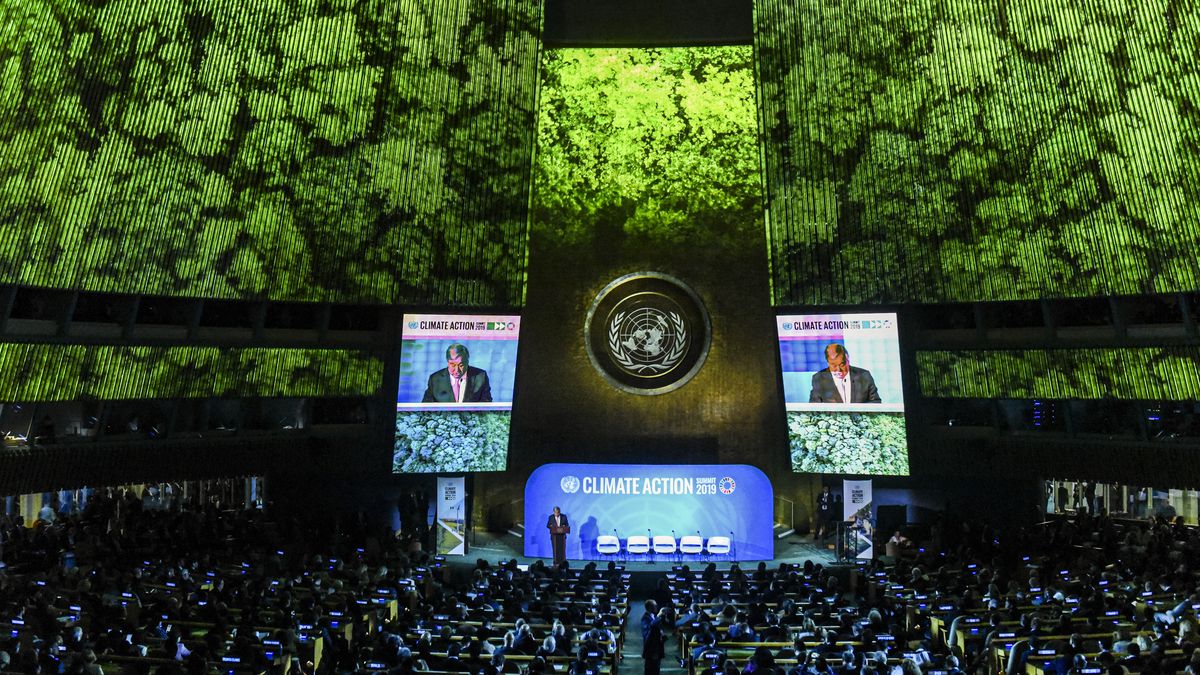
At the UN Climate Action Summit, decarbonization took center stage as countries and non-state actors alike stepped up to commit to carbon neutrality by 2050 or earlier. UN Secretary-General Antonio Guterres had made plans for carbon neutrality by 2050 one of his main asks for the Summit, and a broad range of countries, cities, and businesses took up the challenge.
Under the Paris Agreement, countries are invited to submit their long-term strategies by the end of 2020, and dozens of countries have these plans underway. After the Summit, carbon neutrality by 2050 has become the clear benchmark by which the ambition of these strategies will be judged.
For a comprehensive list of announcements, World Resources Institute was running a liveblog during the Summit and Climate Home News has a helpful wrap-up.
Countries
-
- The launch of the “Climate Ambition Alliance” – a broad group of nations, cities, states, regions, businesses and investors all committed to reach carbon neutrality by 2050 or sooner. The Alliance includes 66 countries, 102 cities, 10 regions, 93 businesses, and 12 investors.
- Five additional countries – Austria, Chile, Italy, Japan, and Timor-Leste – joined the Carbon Neutrality Coalition.
- Portugal became the 13th country to submit its long-term strategy to the UNFCCC.
- Chancellor Angela Merkel confirmed Germany’s goal to be climate neutral by 2050.
- The Least Developed Countries group pledged to enhance their climate plans next year and reach net zero emissions by 2050.
- Finland committed to become carbon neutral by 2033 – two years earlier than the previous 2035 target. President Niinistö said Finland plans to become “carbon negative” soon after.
- Slovakia joined the Powering Past Coal Alliance, committing to close all coal mines and end subsidies to coal mines in 2023. The government has previously also committed to carbon neutrality by 2050.
- Greece and Hungary will phase out coal by 2028 and 2030, respectively.
Businesses and Investors
-
- 87 businesses with a combined market capitalization of over US$ 2.3 trillion committed to set climate targets across their operations and value chains aligned with limiting global temperature rise to 1.5°C above pre-industrial levels and reaching net-zero emissions by no later than 2050 through the UN Global Compact’s “Our Only Future” initiative.
- Even traditionally hard-to-abate sectors are stepping up:
- Dalmia Cement CEO Mahendra Singhi said the company’s goal is to be carbon negative by 2040 using carbon capture and storage
- Getting to zero coalition: Major players from the shipping, energy and finance industries pledged to work together to make net-zero shipping a commercial reality by 2030.
- Steel company SSAB is testing zero-carbon steel manufacturing through the use of hydrogen and expects to produce the first fossil-free steel by 2025.
- Nestlé, the world’s largest food and beverage company, committed to reach net zero emissions by 2050
- Twelve of the world’s largest investors, representing more than US$2 trillion, committed to transitioning their investment portfolios to net-zero greenhouse gas emissions by 2050, consistent with a maximum temperature rise of 1.5°C.
Cities, States and Regions
-
- 102 cities and 10 regions joined the Climate Ambition Alliance, committing to reach carbon neutrality by 2050 at the latest. These cities are part of C40’s Deadline 2020 initiative.
- Governor Janet Mills of Maine announced a new target of carbon neutrality by 2045 for the state.
Sorry, the comment form is closed at this time.